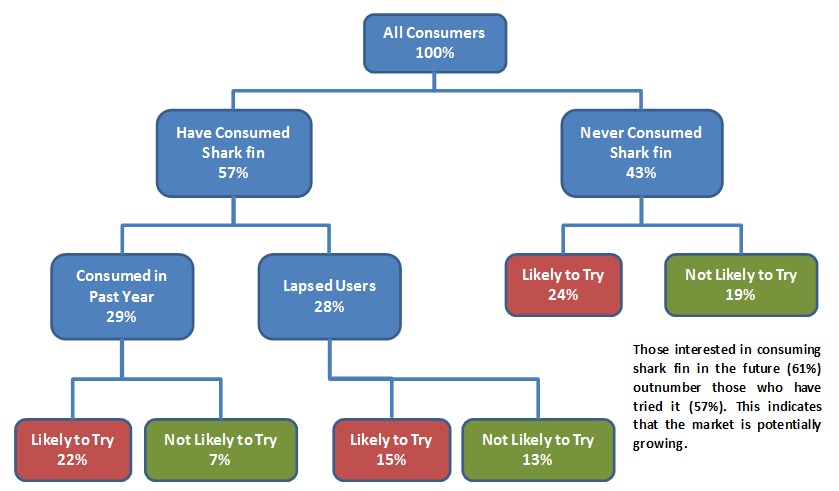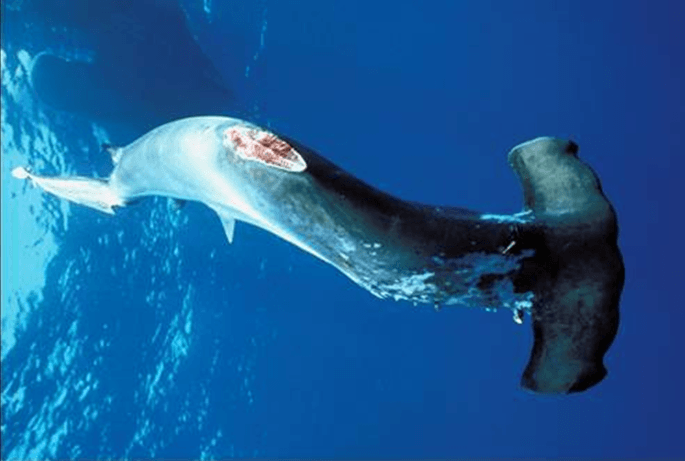Photo: Ecozine.com
Imagine cutting off the fins of a shark and then throwing the carcass back into the water. Still alive, the shark slowly sinks to the bottom as it can no longer swim. The shark dies a slow death. The conservative estimate for global fishery mortality of sharks is 100 million sharks per year. The value of shark fins is the main driver for demand. Because most shark species are large-bodied and slow to reproduce, the trade is unsustainable and shark populations are in rapid decline. Why are consumers ignorant of their impact and why isn’t more being done?
Some key facts about sharks:
- There are 14 species of shark that are commonly killed for their fins and regional population declines range from 40 to as high as 99 percent based on different scientific literature.
- Nine of the 14 shark species are not listed on CITES,[1] and those listed are not listed as threatened with extinction, but the Convention states that, “trade must be controlled to avoid utilization incompatible with their survival.” This definition is inconsistent with the IUCN Red List of Threatened Species.[2]
- A total of 52 countries have implemented some form of ban on shark finning or fishing, but only 12 countries have banned shark fishing altogether. In Indonesia, Malaysia, and Thailand shark fishing is still legal.
As is true for many threatened wildlife species, a major challenge is the relationship between supply and demand. As more and more sharks are killed, the supply of shark fins decreases and the price increases. Because shark fin is associated with prestige, it is often served at Chinese weddings as a status symbol, and the high price makes it even more attractive. A recent study, commissioned by WildAid and conducted by Rapid Asia in Thailand, found that 57 percent of Thais living in urban areas have consumed shark fin at some point (Figure 1). The same study also found that 61 percent of all respondents plan to consume shark fin in the future, indicating demand could be increasing. Recent research by WildAid has found that the price of a bowl of shark fin soup can be as low as 300 baht, and shows that shark fin has the potential to reach a broader set of consumers. Many consumers are curious and want to try it but are unaware of the negative effect it has on sharks.
Figure 1: Shark fin consumption overview

Another challenge is the low level of awareness regarding the cruelty of the shark fin trade. Based on the Thailand study, 85 percent were not aware that some 100 million sharks are killed each year and 50 percent were not aware that sharks are often killed just for their fins. As long as shark fishing is legal, consumers have little reason to suspect the trade is unsustainable. To test this, those likely to consume shark fin in the future (61%, green boxes in Figure 1) were asked if they would still consume shark fin if it became illegal. Over half, 55 percent, said they would not. Amongst the future non-consumers (39%, red boxes in Figure 1), 56 percent believed it’s wrong as sharks are killed in a cruel way and 39 percent felt it was important to protect sharks. This indicates that it could be possible to influence consumers through social marketing activities. Some consumers can be swayed to turn away, but not all.
But domestic demand is only part of the equation. In 2016 alone, the total value of shark fin exports from Thailand was 549.32 million baht.[3] Whilst consumers can be influenced, there is likely to be resistance from those profiting from the trade. For demand reduction to be effective, consumer education needs to be supported by legislative change.
If you found this article useful, please remember to ‘Like’ and share on social media, and/or hit the ‘Follow’ button to never miss an article. You may also want to read this article on Banning Shark Fin Soup: Obtain Private Sector Support Through CSR.
About the Author: Daniel Lindgren is the Founder of Rapid Asia Co., Ltd., a management consultancy firm based in Bangkok that specializes in evaluations for programs, projects, social marketing campaigns and other social development initiatives. Learn more about our work on: www.rapid-asia.com.
[1] CITES – Conservation and management of sharks: Trade-Related Threats to Sharks. Convention on International Trade in Endangered Species of Wilf Fauna and Flora. Twenty-second meeting of the Animals Committee, Peru, 7-13 July 2006, p.4
[2] IUCN – Shark Savers Fact Sheet: IUCN Status of Shark Species. 2012.
[3] Food Intelligence Centre Thailand. Including processed shark fin, processed shark fin in air-tight container, and shark fin.

